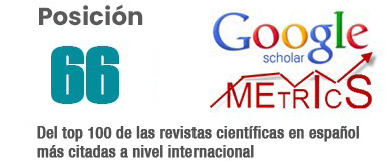Allelopathic potential of native species on weeds in Morelos, Mexico associated with the cultivation of corn
DOI:
https://doi.org/10.62452/ds4a7g27Keywords:
Allelopathy, sandwich microbioassay, inhibition, germination, root interactionAbstract
The main objective of the study was to identify native plants of the State of Morelos with allelopathic potential associated with the cultivation of corn, which could be involved as a Push-Pull strategy. Aqueous extracts of thirty collected weed species were applied against two white species, evaluated by a new sandwich microbioassay in Elisa plates, in parallel with a plate bioassay. Effects on germination, root growth and hypocotyl were calculated. A second trial evaluated the allelopathic potential of weeds on the growth of Parthenium hysterophorus under semi-controlled conditions, recording the total effect, foliar and root interaction without barriers, competition for cover and root interaction, to then calculate the root interaction (IR) based on the witness. The results indicated that the medium doses 2.5% w/v and high doses 5% w/v of aqueous extracts of the weeds Rhynchosia minima, Antigonon leptopus, Ipomoea tricolor, Ipomoea triloba, Calopogonium mucunoides, Crotalaria pumila and Ipomoea hederifolia, show inhibitory activity on the germination and growth of Amaranthus hypochondriacus and Panicum maximum. All the residues inhibited the germination and growth of the weeds, increasing their activity when increasing the dose. Species with allelopathic potential could be evaluated in a program that involves the Push-Pull strategy associated with maize cultivation. Seven native species with potential allelopathic effect were identified by means of a fast and economic protocol such as sandwich microbioassay, in addition, the weeds with the highest inhibition were verified using two doses of residues, and the predominant effect of three species of Convulvulaceae was illuminated, in the inhibition with interaction. root on weeds.
Downloads
References
Achnine, L., Pereda-Miranda, R., Iglesias-Prieto, R., & Lotina-Hennsen B. (1998). Impairment of Photosystem II Acceptor Side of Spinach Chloroplasts Induced by Tricolorin A. In: Garab G. (eds) Photosynthesis: Mechanisms and Effects. Springer.
Al-Rehiayani, S., & Hafez, S. (1998). Research: Host Status and Green Manure Effect of Selected Crops on Meloidogyne chitwoodi Race 2 and Pratylenchus neglectus. Nematropica 28, 213-230.
Anaya, A. L., Hernández-Bautista, B. E., Pelayo-Benavides, H. R., Calera, M., & Fernández-Luiselli, E. (1995). Allelopathy in Mexican plants: More recent studies. Allelopathy. Chapter 17 pp 224-241. ACS Symposium Series, 582.
Bàrberi, P. (2004). Métodos preventivos y culturales para el manejo de malezas. En, R. Labrada, (Ed), Manejo de malezas para países en desarrollo (Addendum I). (pp.197-213). FAO.
Basinger, R. (2017). American Joinvetch. QDMA, Quality Deer Management Association. https://www.qdma.com/american-jointvetch/
Belgeri, A., & Adkins, S. W. (2015). Allelopathic potential of invasive parthenium weed (Parthenium hysterophorus L.) seedlings on grassland species in Australia. Allelopathy Journal, 36(1-2). 1-14.
Farooq, M., Jabran, K., Cheema, Z.A., Wahid, A., & Siddique, K.H. (2011). The role of allelopathy in agricultural pest management. Pest management science, 67(5), 493-506.
Fujii, Y., Parvez, S. S., Parvez, M. M., Ohmae, Y., & Lida, O. (2003). Screening of 239 medicinal plant species for allelopathic activity using the sandwich method. Weed Biol. Manage, 3, 233-241.
Hernández, M., Hernández, R., & Guillen, D. (2015). New micro bioassay sandwich to detection allelopathic activity from Ipomoea batatas (L.) Lam., Journal of Food, Agriculture and Environment, (3-4), 45-48.
Hernández-Terrones, M. G., do Nascimento, E. A., de Morais, S. A. L., Chang, R., Andrade, G. A., Santos, D. Q., & Pereira, B. H. A. (2009). Allelopathic potencial of Pequi (Caryocar brasiliense) on Panicum maximum seeds. (Ponencia). XII Congresso da Sociedad Española de Malherbologia. Lisboa, Portugal.
Ishak, M. S., Ain, M. N., Sahid, I., & Mardiana-Jansar, K. (2021). Allelopathic screening of Malaysian noxious weeds and several medicinal plants as potential alleloherbicides. Journal of Environmental Biology, 42, 762-774.
Kapoor, D., Tiwari, A., Sehgal, A., Landi, M., Brestic, M., & Sharma, A. (2019). Exploiting the allelopathic potential of aqueous leaf extracts of Artemisia absinthium and Psidium guajava against Parthenium hysterophorus, a Widespread Weed in India. Plants, 8(12).
Kim, K.U., & Shin, D.H. (2004). La importancia de la alelopatía en la obtención de nuevos cultivares. En, R. Labrada, (Ed.), Manejo de malezas para países en desarrollo, (Addendum I). FAO.
Kokalis-Burelle, N., & Rosskopf, E. N., (2012). Susceptibility of several common subtropical weeds to Meloidogyne arenaria, M. incognita, and M. javanica. J. Nematol., 44 (2), 142-147.
Kumar, T., Bishwas, A. J., Khare, P. K., &Garg, N. (2021). Invasive alien flora of tropical dry deciduous forest of Nauradehi Wildlife Sanctuary, Central India. Indian Journal of Ecology, 48(1), 219-225.
Miranda-Arámbula, M., Reyes-Chilpa, R., and Anaya L, A. L. (2021). Phytotoxic activity of aqueous extracts of ruderal plants and its potential application to tomato crop. Botanical Sciences, 99(3), 487-498.
Narwal, S.S. (1996). Suggested methodology for allelopathy laboratory bioassay. Allelopathy: Field Observation and Methology. Joudpur, India: Scientific Publisher, 1, 255-266.
Nodza, G., Anthony, R., Onuminya, T., & Ogundipe, O. (2021). Floristic Studies on Herbaceous and Grass Species Growing in the University of Lagos, Nigeria. Tanzania Journal of Science, 47(1), 80-90.
Pereda-Miranda, R., Mata, R., Anaya, A. L., Wickramaratne, D. B., Pezzuto, J. M., Kinghorn, A. D., & Tricolorin, A. (1993). Major phytogrowth inhibitor from Ipomoea tricolor. J Nat Prod., 56 (4), 571-82.
Rhoades, H. L. (1980). Relative susceptibility of Tagetes patula and Aeschynomene americana to plant nematodes in Florida. Nematropica, 10(2),116-120.
Scavo, A., Pandino, G., Restuccia, A., & Mauromicale, G. (2020). Leaf extracts of cultivated cardoon as potential bioherbicide. Scientia Horticulturae, 261(2).
Downloads
Published
Issue
Section
License
Copyright (c) 2023 Maykel Hernández-Aro, Federico Castrejon-Ayala, Hilda E. Flores-Moctezuma, Ricardo Hernández Pérez (Autor/a)

This work is licensed under a Creative Commons Attribution-NonCommercial-ShareAlike 4.0 International License.
Authors who publish in Revista Metropolitana de Ciencias Aplicadas (REMCA), agree to the following terms:
1. Copyright
Authors retain unrestricted copyright to their work. Authors grant the journal the right of first publication. To this end, they assign the journal non-exclusive exploitation rights (reproduction, distribution, public communication, and transformation). Authors may enter into additional agreements for the non-exclusive distribution of the version of the work published in the journal, provided that acknowledgment of its initial publication in this journal is given.
© The authors.
2. License
The articles are published in the journal under the Creative Commons Attribution-NonCommercial-ShareAlike 4.0 International License (CC BY-NC-SA 4.0). The terms can be found at: https://creativecommons.org/licenses/by-nc-sa/4.0/deed.en
This license allows:
- Sharing: Copying and redistributing the material in any medium or format.
- Adapting: Remixing, transforming, and building upon the material.
Under the following terms:
- Attribution: You must give appropriate credit, provide a link to the license, and indicate if any changes were made. You may do this in any reasonable manner, but not in any way that suggests the licensor endorses or sponsors your use.
- NonCommercial: You may not use the material for commercial purposes.
- ShareAlike: If you remix, transform, or build upon the material, you must distribute your creation under the same license as the original work.
There are no additional restrictions. You may not apply legal terms or technological measures that legally restrict others from doing anything the license permits.




